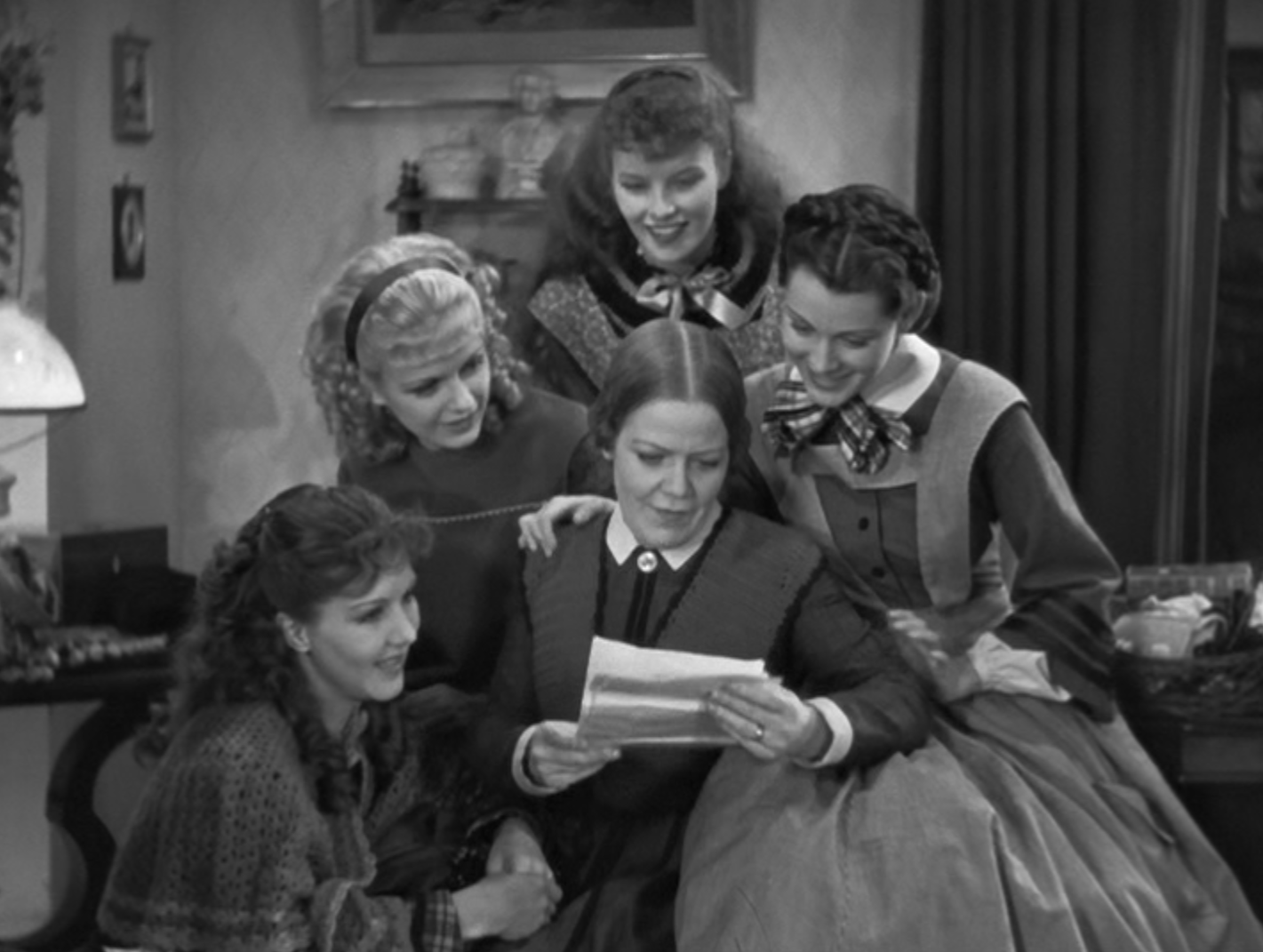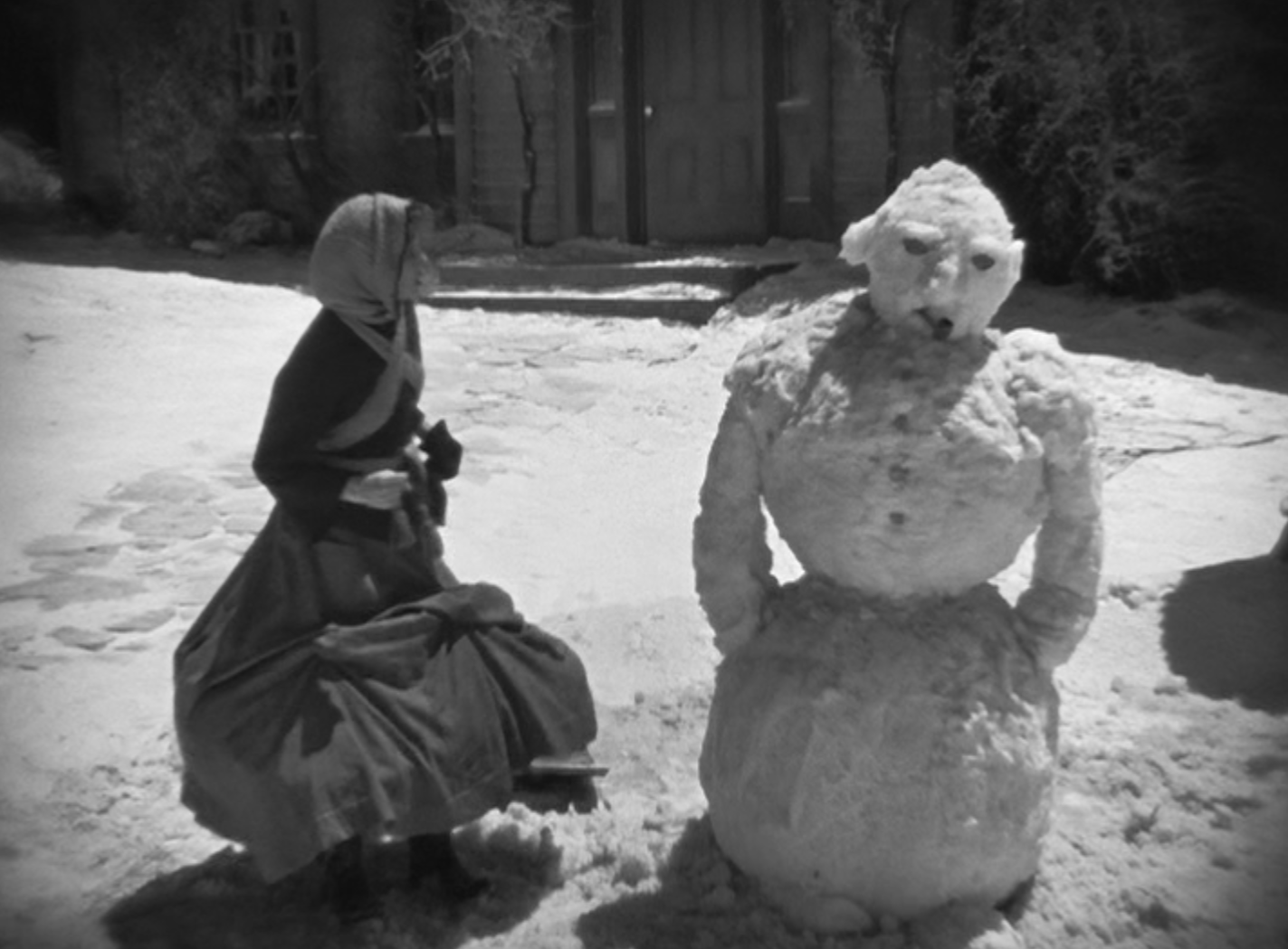Both David O. Selznick and George Cukor had already left RKO for M.G.M. in early 1933, but Selznick had one last film in his contract although having left to work under his father-in-law Louis B. Mayer and Cukor seemed to "owe" RKO a picture after his smash hit "A Bill of Divorcement" from the year before. But Louisa May Alcott's novel Little Women had already been floating around the RKO lot in many different drafts and it's possibly speculated that many of them were either updated and/or expanded upon. Selznick didn't appreciate this and one of the first things he did as an uncredited producer was to persuade the RKO executives to maintain the setting from Alcott's novel and to not update the story.
October 1932's Film Daily reported Selznick had initially hired John S. Robertson to direct and George Cukor as writer. But husband and wife writing team (already established silent director-producer) Victor Heerman and (first ever Hollywood script supervisor and inventor of talkie continuity) Sarah Y. Mason ended up with the honor. Katherine Hepburn would later consider Heerman and Mason's script in her biography as "a brilliant script, in my humble opinion. Simple and true and naive but really believable. It was amazing the difference between this script and its predecessors. Mason and Heerman believed the book. So did I. The others didn't. (Hepburn. Me: Stories of My Life. 1991.) Even Cukor would call the script "something quite original for the time. It wasn't slicked up. The construction was very loose, very episodic, like the novel. Things happen, but they're not tied together...the writers believed in the book, they understood its vitality, which is not namby-pamby in any way."
Cukor would find himself directing considering the success of "A Bill of Divorcement" also with the help of Selznick and star Katherine Hepburn despite the fact he had never read the novel before. "Of course I'd heard of it all my life, but it was a story that little girls read ... when I came to read it, I was startled. It's not sentimental or saccharine, but very strong-minded, full of character, and a wonderful picture of New England family life. It's full of that admirable New England sternness, about sacrifice and austerity." (Lambert, Gavin. On Cukor. 1972.)
Katherine Hepburn seemed to be Cukor's only option to play Josephine March. He had been impressed with the 24-year-old's screen test for "...Divorcement" despite Selznick's protestations that she would not be well received by audiences with her looks. But she would end up cast anyway and declared by the Hollywood Reporter as "a new star on the cinema horizon" as well as procuring a life-long friendship with Cukor.
"When I directed Little Women I had to develop a new technique to ensure the best results from the collaboration of Miss Hepburn and myself...a fine actress, Katherine Hepburn is more than a personality. She is a human dynamo. Without meaning to be, and simply because of the vigor of her own mind and the intensity of her attitude toward her own work, she can be, if given the chance, what I would call an artistic bully...I do not say that had I decided to "lie down" to her from the start...a less good picture would have resulted. But a director with a conscience will fight tooth and nail to get the picture as he wants it. Let me hasten to say that Miss Hepburn and I did not fight at all. I confess freely that I used many weapons in dealing with her -simulated rage, ridicule and good-humored cajolery. She has a great sense of humor, and is capable of directing it against herself." (Koszarski, Richard. Hollywood Directors. 1976.)
According to production files, many actresses would test for the March family, including Connie Jones, Helen Mack, Jennie Dark, and Adelyne Doyle tested for Beth; Billie Burke, Phoebe Foster, and Ann Shoemaker were tested for the role of Mrs. March; Leonard Mudie was tested for Mr. March; Howard Wilson and Richard Houghton were tested for Laurie. Edna May Oliver would be cast as Aunt March after Louise Closser Hale passed away and Douglass Montgomery replaced Eric Linden as Laurie. In a more recent interview Cukor would admit to casting Joan Bennett after meeting her at a party where she was somewhat tipsy but found Spring Byington's "Marmee" as "hardly Alcott's "tall stately lady."" (Little Women (1933) - Toronto Film Society)
"Little Women" started production June 28th 1933 and took three months to shoot, its estimated budget coming out at $424,000 out of $1 million with a one-year production schedule with 4,000 employees. Every piece of Ray Moyer's set decoration and Walter Plunkett's costumes would be historically authenticated. Katherine Hepburn even gave Plunkett a photographic tintype of her late maternal grandmother so he could create the dress her grandmother had worn in the picture. Cukor would also state that the March sisters shared costumes to increase the film's realism and consciously avoided making "big scenes" so nothing would call attention to itself.
Former artist and interior designer Hobe Erwin was also hired to oversee the sets and is credited of designing the interiors of the March home after Louisa May Alcott's Massachusetts home, Orchard House. Exteriors were filmed at Lancaster's Lake in Sunland, Providencia Ranch in the Hollywood Hills as well as the Warner Bros.'s Pasadena Ranch. According to the studio files, real snow was used for the winter scenes despite the sweltering 100 degrees. Harry Redmond is also credited for special effects including hand-coloring the fireplaces and candles.
"We had a sound strike when we were shooting the long sequence, when Beth was dying and everyone was weeping--especially me. It was agony. We had to do it over and over again because of sound. Agony. I finally threw up and we had to try again the next day." (Hepburn. Me: Stories of My Life. 1991.)
Cukor's second-billed actress Joan Bennett intentionally chose not to mention her pregnancy to Cukor when she was impulsively cast in "Little Women" by the director. Walter Plunkett had to redesign several of her costumes to conceal while Cukor frequently obscured her pregnancy through blocking and editing.
Filming wrapped September 2nd 1933 and first premiered at New York City's Radio City Music Hall November 16th the same year which would be considered the coldest November 16th for 50 years. 23,073 people attended the first day and broke opening day attendance records, earning over $100,000 in receipts during its first week of release and making RKO a total of $800,000 in profits. 451,801 attended the three week run at Radio City before moving to RKO's Center Theatre where 250,000 attended in four weeks. In domestic rentals, it earned a total of $1,337,000 and $2,000,000 worldwide making "Little Women" the ninth most popular at the U.S. box office for 1933. It would be so successful, the film was re-released in 1938 earning an additional $70,000 in rentals and $49,000 in profit.
"The easy-going fashion in which George Cukor, the director, has set forth the beguiling incidents in pictorial form is so welcome after the stereotyped tales with stuffed shirts," Mordaunt Hall of The New York Times lauded, "It matters not that this chronicle is without a hero, or even a villain for the absence of such worthies, usually extravagantly drawn, causes one to be quite contented to dwell for the moment with human hearts of the old-fashioned days. The film begins in a gentle fashion and slips away smoothly without any forced attempt to help the finish to linger in the minds of the audience." Variety called it "a superbly human document, sombre in tone, stately and slow in movement, but always eloquent in its interpretations."
Little Women will be playing on Turner Classic Movies on December 25th at 6:15 CST/7:15 EST





No comments:
Post a Comment